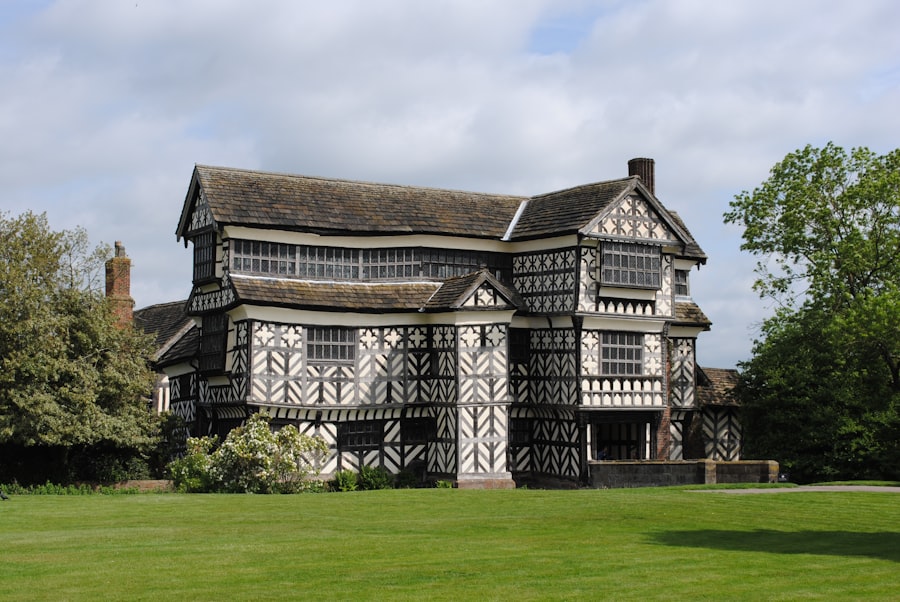Restoration of Manila Cathedral: A Symbol of Hope and Resilience
Description
The Manila Cathedral, officially known as the Cathedral-Basilica of the Immaculate Conception, has a rich and storied history that dates back to the Spanish colonial period in the Philippines. The original structure was built in 1581, making it one of the oldest churches in the country. It was established as the seat of the Archdiocese of Manila, which was created to serve the spiritual needs of the growing Catholic population in the region.
Over the centuries, the cathedral has undergone numerous transformations, reflecting the changing political and social landscapes of the Philippines.
The first structure was made of bamboo and nipa palm, but it was soon replaced by a more durable stone building.
This second iteration was completed in 1592 but was destroyed by an earthquake in 1645. Subsequent reconstructions followed, with each new version of the cathedral incorporating elements from various architectural styles, including Baroque and Neo-Gothic influences. The most significant reconstruction occurred in 1958 after World War II, when the cathedral was rebuilt to restore its former glory and accommodate a growing congregation.
Key Takeaways
- Manila Cathedral has a rich history dating back to the Spanish colonial period, with the first church built in 1571.
- The cathedral has been destroyed and rebuilt several times, with the most recent restoration completed in 2014 after damage from natural disasters and war.
- The cathedral is a symbol of resilience and faith for the Filipino people, and its architecture reflects a blend of different styles from different periods.
- The cathedral holds significant cultural and religious importance, serving as a venue for important events and ceremonies in the Catholic faith.
- Manila Cathedral plays a crucial role in Filipino society, serving as a center for spiritual and community activities, and has a significant impact on tourism in the area.
Destruction and Restoration
Early Destruction and Reconstruction
The original Manila Cathedral was built in 1581, but it was destroyed by fire in 1583. It was rebuilt in 1592, only to be damaged again by earthquakes in 1600 and 1645. The cathedral was reconstructed again in 1750, but it was destroyed once more by another earthquake in 1852.
World War II Devastation
The most significant destruction to the Manila Cathedral occurred during World War II. The cathedral was bombed by American forces in 1945, leaving it in ruins. The destruction was so severe that only the outer walls and the façade remained standing.
Post-War Restoration
After the war, the Manila Cathedral underwent a major restoration project. The reconstruction was led by architect Fernando Ocampo, who aimed to restore the cathedral to its original grandeur. The project took several years to complete, but the result was a beautifully restored cathedral that was inaugurated in 1958.
The Japanese occupation of the Philippines from 1942 to 1945 brought about widespread devastation, and the cathedral was not spared. It suffered extensive damage during the Battle of Manila in 1945, when Allied forces fought to liberate the city from Japanese control. The once-majestic structure was left in ruins, with only fragments of its walls standing.

In response to this destruction, a major restoration project was initiated in 1954 under the guidance of architect Fernando Ocampo. The restoration aimed not only to rebuild the physical structure but also to preserve its historical and cultural significance. The new design incorporated modern materials while respecting the original architectural style.
The cathedral was rededicated on April 9, 1958, and since then, it has continued to serve as a vital center for Catholic worship and community gatherings.
Symbolism of Manila Cathedral
| Symbolism of Manila Cathedral | Description |
|---|---|
| Three Naves | Represent the Holy Trinity |
| Five Altars | Symbolize the five wounds of Christ |
| Stained Glass Windows | Depict biblical scenes and saints |
| Carvings and Sculptures | Depict religious figures and events |
The Manila Cathedral stands as a powerful symbol of resilience and faith for Filipinos. Its enduring presence amidst the trials of history reflects the strength of the Catholic Church in the Philippines, which has played a pivotal role in shaping the nation’s identity. The cathedral is often seen as a beacon of hope, representing not only religious devotion but also national pride.
Its towering façade and intricate details evoke a sense of reverence and admiration among both locals and visitors. Moreover, the cathedral serves as a reminder of the Philippines’ colonial past and its journey toward independence. The architectural elements, such as its grand entrance and majestic bell tower, symbolize the fusion of indigenous culture with Spanish influences.
Architectural Significance
Architecturally, the Manila Cathedral is a remarkable example of Neo-Romanesque design, characterized by its grand arches, intricate carvings, and impressive dome. The current structure features a façade adorned with sculptures that depict various saints and biblical figures, showcasing the artistry of Filipino craftsmen. The cathedral’s design is not only aesthetically pleasing but also functional; its layout accommodates large congregations while providing an intimate atmosphere for worship.
One of the most striking features of the cathedral is its massive rose window, which serves as a focal point for both light and artistic expression. This stained-glass masterpiece depicts scenes from the life of Christ and is a testament to the skill of artisans who have contributed to its creation over the years. Additionally, the cathedral’s bell tower houses several bells that have been cast from different materials, each with its own unique sound and history.
These architectural elements combine to create a space that is both sacred and inspiring.
Cultural and Religious Importance

The Manila Cathedral holds immense cultural and religious significance for Filipinos. As one of the principal churches in the country, it serves as a central hub for Catholic worship and community events. Major religious celebrations, such as Christmas Eve Mass and Easter Sunday services, draw thousands of attendees each year, highlighting its role as a spiritual center for believers.
The cathedral also hosts important rites of passage, including baptisms, weddings, and funerals, marking significant moments in the lives of many families. Beyond its religious functions, the cathedral is a cultural landmark that embodies Filipino heritage. It has been featured in numerous films, literature, and art forms, serving as an inspiration for generations of artists and writers.
The cathedral’s presence in popular culture reinforces its status as a symbol of national identity and pride. Furthermore, it plays an essential role in interfaith dialogues and community outreach programs, fostering understanding among diverse religious groups within Filipino society.
Role in Filipino Society
The Manila Cathedral is more than just a place of worship; it is an integral part of Filipino society that fosters community engagement and social responsibility. The Archdiocese of Manila actively participates in various social programs aimed at addressing issues such as poverty, education, and health care. Through initiatives like feeding programs for underprivileged children and scholarship opportunities for students from low-income families, the cathedral extends its influence beyond spiritual matters into tangible acts of service.
Moreover, the cathedral serves as a venue for important social discussions and events that address contemporary issues facing Filipino society. It has hosted forums on topics such as human rights, environmental sustainability, and social justice, encouraging active participation from parishioners and community members alike. This engagement reflects a commitment to not only spiritual growth but also social transformation, emphasizing the church’s role as a catalyst for positive change within society.
Impact on Tourism
As one of Manila’s most iconic landmarks, the Manila Cathedral attracts both local and international tourists who seek to experience its historical and architectural grandeur. Visitors are drawn to its stunning design and rich history, making it a must-see destination for those exploring the city. Guided tours provide insights into its significance within Philippine history and culture, allowing tourists to appreciate not only its beauty but also its deeper meanings.
The cathedral’s location within Intramuros—a historic district known for its colonial architecture—further enhances its appeal as a tourist attraction. Many visitors combine their trip to the cathedral with explorations of nearby sites such as Fort Santiago and San Agustin Church. This synergy between cultural heritage sites contributes to a broader understanding of Manila’s history while supporting local businesses through increased foot traffic in the area.
Future Plans and Sustainability
Looking ahead, there are ongoing discussions about future plans for the Manila Cathedral that prioritize sustainability and preservation. As urban development continues to reshape Manila’s landscape, efforts are being made to ensure that the cathedral remains a vital part of the city’s cultural fabric. Plans include enhancing visitor facilities while maintaining respect for its historical integrity.
Sustainability initiatives are also being considered to reduce the environmental impact associated with maintaining such an iconic structure. This may involve implementing energy-efficient lighting systems or utilizing eco-friendly materials for maintenance work. By embracing modern sustainability practices while honoring its historical legacy, the Manila Cathedral aims to remain relevant in an ever-changing world while continuing to inspire future generations with its beauty and significance.
If you are interested in exploring more about Manila Cathedral, you may also enjoy reading about the “Mania de Palabras 2” game in this article. This word game could be a fun way to pass the time while learning more about the history and culture of Manila.
FAQs
What is the Manila Cathedral?
The Manila Cathedral, also known as the Minor Basilica and Metropolitan Cathedral of the Immaculate Conception, is a Roman Catholic basilica located in Manila, Philippines.
When was the Manila Cathedral built?
The original Manila Cathedral was built in 1581, but it has been destroyed and rebuilt several times due to natural disasters and wars. The current structure was completed in 1958.
What is the architectural style of the Manila Cathedral?
The Manila Cathedral features a combination of architectural styles, including Baroque, Neo-Romanesque, and Neo-Byzantine influences.
What is the significance of the Manila Cathedral?
The Manila Cathedral is a significant religious and cultural landmark in the Philippines. It has been the site of many important events in the country’s history, including the papal visits of Pope Paul VI, Pope John Paul II, and Pope Francis.
Is the Manila Cathedral open to the public?
Yes, the Manila Cathedral is open to the public for worship, prayer, and guided tours. Visitors are welcome to explore the cathedral’s interior and learn about its history and significance.





